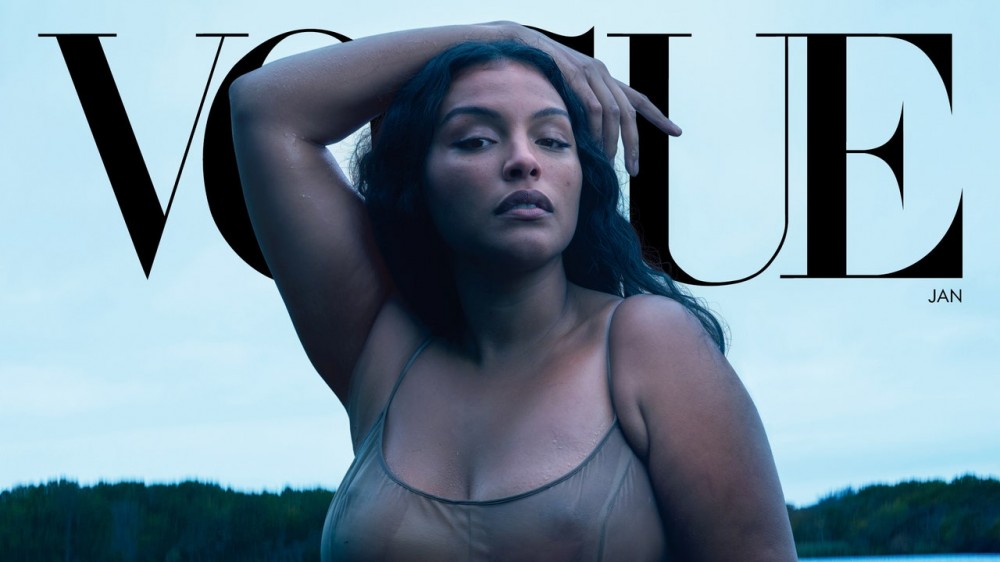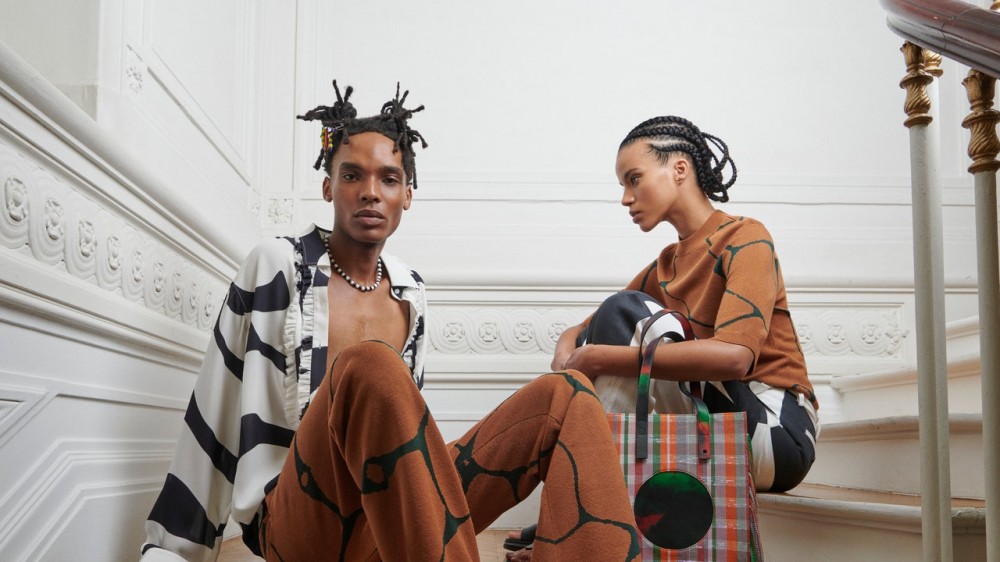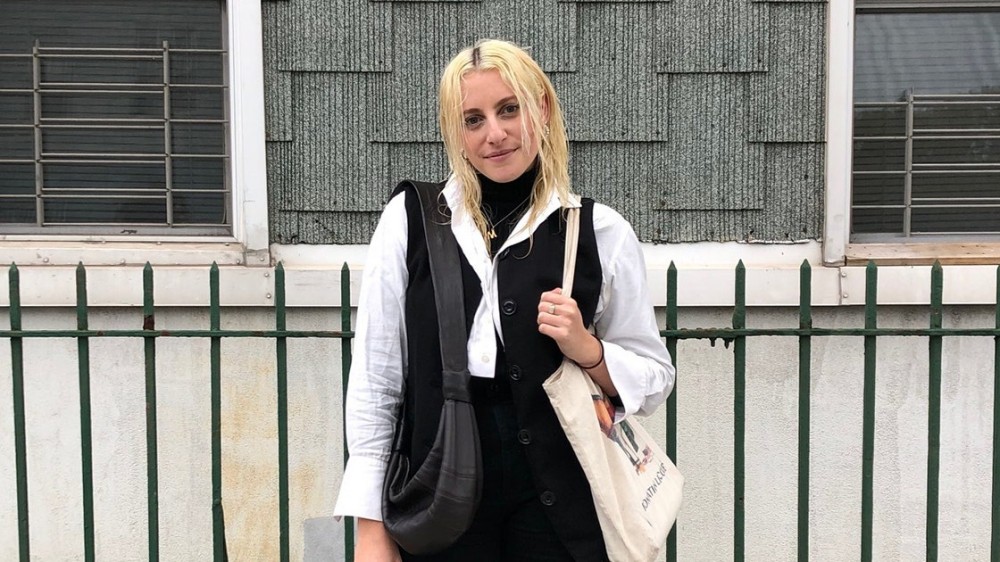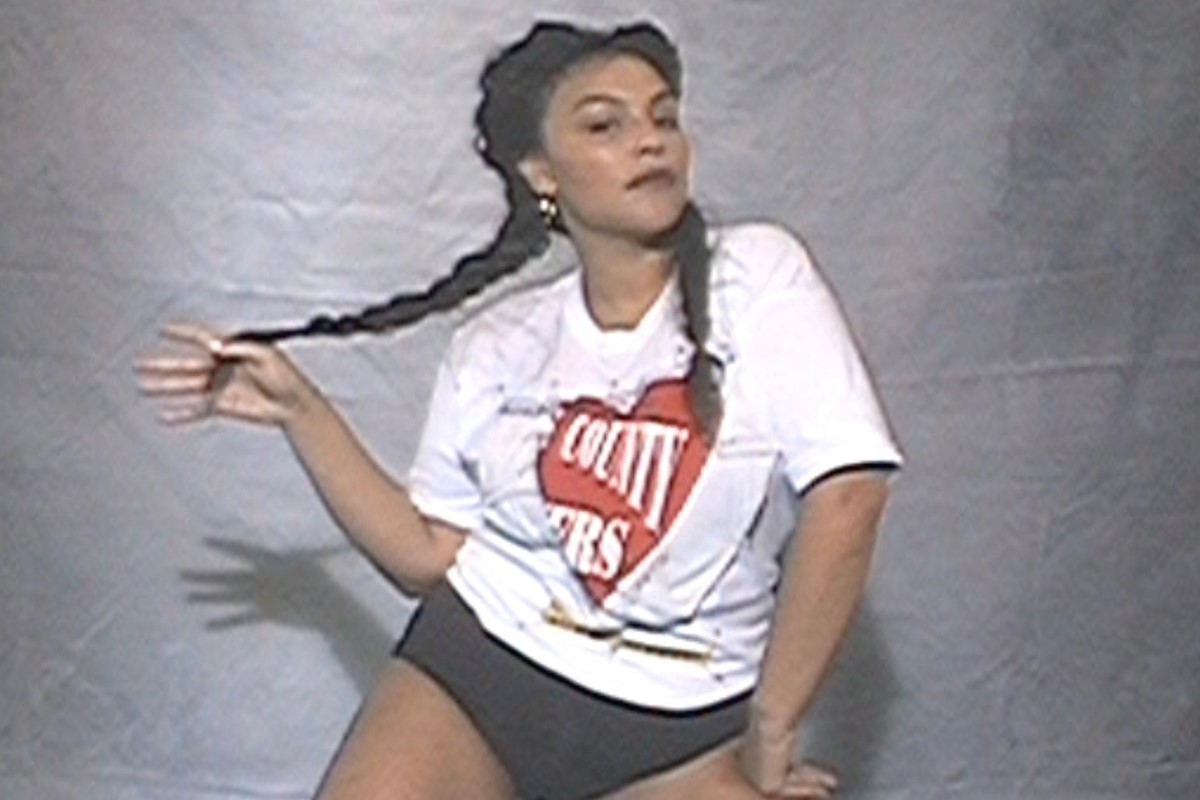
Role Model: How Paloma Elsesser Is Changing Fashion for the Better
Paloma Elsesser wears a Michael Kors Collection dress. Photographed by Annie Leibovitz, Vogue, January 2021
ON PAPER, THE IDEA of fashion insiders hitting up the local pumpkin patch seems utterly absurd, but on a chilly weekend in October, Paloma Elsesser and her friends find themselves amid an expanse of Dutchess County farmland nestled deep in the Hudson Valley of upstate New York, the stuff of grade school field trips and pastoral postcards. The birthday celebrations for Elsesser’s friend Camille Okhio, a Nigerian American writer and fine- and decorative-arts historian, are in full swing.
For many in the group—which also includes designer Emily Adams Bode and mixed-media artist Theresa Chromati—this is a welcome opportunity for some fresh air while discussing anything that is not work. Talk centers on the upcoming election, the prospect of apple-cider doughnuts, and the task at hand. Weeks after the farm’s first harvest, it seems that the best specimens are already halfway to becoming either jack-o’-lanterns or pie, so the band of arrestingly dressed creatives sifts through what remains, occasionally tripping over vines and pausing only to film Instagram stories among the foliage.
Then again, the spoils of the trip aren’t as important as its sense of normality. Months of isolation brought on by the COVID-19 crisis take their toll, and camaraderie can be hard to come by in a pandemic. Elsesser, 28, serves as a kind of den mother, trekking through the patch to check in on everybody. In her black leather cutout blazer from Lourdes and custom Khaite leather pants, she’s at odds with the setting, but the look feels unpretentious, more the result of a hastily packed weekender. Three weeks earlier she’d been jetting through Europe, tackling a most unusual runway season. Some top models opted to sit things out, but for Elsesser the positive effects actually outweighed the risks. “My nerves were quieted because everything else going on in the world felt so uncertain,” she says. “With a global pandemic, a movement for Black lives, fiscal shifts, emotional and physical changes, anyone will go through emotional transformations—I certainly did. After five months in quarantine, I wanted to feel centered in my purpose. Modeling is my livelihood and my career, not my passion, but that passion is cloaked within what I do.”
Elsesser’s passion can be summed up in one word: community. Spend five minutes with her and you’re likely to hear it more than once; the term is at the center of her life, both personally and professionally. Online, her clique of industry friends and fans has united over a shared belief in inclusion, forming a welcoming group that includes designers, filmmakers, influencers, and anyone else willing to participate. As the glue holding things together, Elsesser is keenly aware of what her visibility means—for herself and for others. “When a size 14 person like myself says no to doing a show, they may not put anyone larger in that show—therefore that sample doesn’t go into the editorial season; other girls my size don’t get shot in looks that aren’t lingerie or a jacket; there’s a whole cycle happening. My participation isn’t just about me.”
Though she identifies as a Black multiracial woman, it’s impossible to categorize her beauty. In one photograph, her combination of curves and composure renders her coolly sensual; in another image, she’s a freckle-faced girl next door brimming with cheer. Her background is a mélange of cultures and experiences—Black, Latinx, European. More than any other model in recent memory, Elsesser embodies a new and unique American aesthetic—she’s an Everywoman capable of representing multitudes. “When she started, there was no one else like her—especially among curve models,” says IMG’s director Mina White. As the woman who helped make Ashley Graham a household name, White knows the hurdles faced by models whose bodies deviate from the industry norm. “Everything was an uphill battle. There wasn’t a ‘cool’ girl—Paloma had to come in and create her own category.”
Designers have latched onto that. Though the spring 2021 collections were truncated due to travel bans, Elsesser still managed to walk for marquee shows like Fendi and Ferragamo in addition to locking down a place in Rihanna’s Savage x Fenty Amazon Prime special and a lucrative deal with Coach as a face of the brand’s Originals Go Their Own Way campaign, alongside Michael B. Jordan and Megan Thee Stallion. A decade ago, such work would be the sole purview of rail-thin Caucasian models, and while there’s no shortage of beautiful waifs in 2021, women like Elsesser, Precious Lee, and Alva Claire—all of whom were present on Milan’s catwalks—are carving out a new niche.
“For a big chunk of my time in fashion, the industry seemed to celebrate a cold and emotionless, blank-stare type of modeling,” says Coach executive creative director Stuart Vevers, who compares Elsesser to charismatic stars like Hari Nef and Binx Walton. “Thankfully, what has returned is the idea that a model should convey personality, warmth, and a sense of an interior life—the type of look that draws you in and makes you stop scrolling.” First introduced to Elsesser at the 2017 CFDA Fashion Awards, Vevers was impressed by her authenticity. “She’s a very genuine person, and that’s something you feel instantly.”
GROWING UP IN THE predominantly Black Los Angeles neighborhood of Mid-City while attending mostly white schools in the early 2000s, Elsesser was constantly motivated by a desire for connection. The children of an African American mother and Chilean Swiss father, she and her siblings did not fit neatly into any categorization. “My mother was this intensely educated woman who went to Wellesley, graduated at the top of her class, [but] we didn’t have money,” says Elsesser. “She always prioritized education, particularly private schools that catered predominantly to white, affluent people. That was hard—not being able to define myself, existing in a larger body since first or second grade, and not having the privilege of wealth.” L.A.’s culture of celebrity exacerbated those issues. “You don’t just have rich people as classmates; you have cool rich people. This person is so-and-so’s daughter; this person’s dad composed the theme to Titanic; this person’s dad is James Cameron! That was strange for me.”
Schiaparelli top. Mônot skirt. In this story: hair, Latisha Chong; makeup, Susie Sobol.Photographed by Annie Leibovitz, Vogue, January 2021
The Elsessers themselves, a close-knit and artistic brood, are far from typical. “I identify my upbringing as ‘hippie poor,’ ” Elsesser says with a laugh. “Both of my parents were musicians, and my mom was a teacher and writer. I grew up with Black Methodist grandparents, and we were all in one household.” The duplex at the intersection of 12th Street and Tremaine was a hub buzzing with activity. It’s where she had long talks with her grandfather, a Quaker and a conscientious objector to World War II, and talked kickflips with her pro-skateboarder and musician brother Sage. One of 14 grandchildren, with her cousins, aunts, and uncles all within a short distance, she was surrounded by a motley crew of personalities and stories.
“It was weird, but it was also very beneficial,” says Elsesser. “Now I see all the ways it presents in my life, how it made me more informed.” At the moment, she’s in the process of purchasing a Brooklyn brownstone with Sage and is looking to pay those lessons forward (she’s also actively participating in her community via her work with Mutual Aid’s Community Fridge Program). “It’s the least I can do for my family and those I consider family,” she says. “We take care of each other.”
After high school, Elsesser headed to New York and the New School for a double major in literature and psychology—and threw herself into all the art, film, and music the city had to offer. Though she’d relocated to one of the world’s style capitals, fashion never emerged as a big interest. “I’d say, ‘Wow, I love that cool brand Low’—I didn’t know what any of this stuff was,” she says, referencing the iconic Spanish brand Loewe (pronounced “low-eh-vay”). “Modeling was never on my radar—at best, I thought maybe I could do some personality work. I used to watch MTV and think about how sick it was to be a VJ.”
Music television never came calling, but Elsesser’s distinctive looks garnered attention. Friends like Australian stylist Stevie Dance encouraged her to emulate successful models like Crystal Renn and Sophie Dahl, who began their careers in the curve market, but the glamazon space both occupied never felt authentic. “I felt like they had this inherent power and sexuality that I didn’t feel in myself,” says Elsesser. “I wasn’t tall enough or thin enough, and I wasn’t the right kind of plus. I was this chubby weird brown girl from L.A., just figuring things out.” At Dance’s urging, though, Elsesser began to make the rounds with modeling agencies, “but everyone said no when I walked in, because I didn’t know what to wear,” she says. “I’d never learned how to move in front of a camera.”
Her methods of coping were often unhealthy. Now nine years sober, she’s been candid about living with addictions that pushed her to the edge. “When I was younger, it was drugs and alcohol; now it’s overthinking and money,” says Elsesser. “So much of it comes back to transparency and vulnerability. Everyone is in pursuit of their own goals, and the by-product of that is loneliness.” Though she’s moved forward, she’s reluctant to consider her demons vanquished. “We tend to view hardship as something with a beginning and an end. I haven’t overcome everything, but I continue to put up a good fight.”
In between rejections, Elsesser regrouped by taking a gig as a manager on childhood friend Earl Sweatshirt’s tour in 2015. And then one day, as they touched down in Philadelphia, she received an email that would change her life. In the middle of prepping the launch of her namesake cosmetics line, makeup artist Pat McGrath was hunting for faces, and Elsesser’s serene beauty immediately caught her eye. Despite her lack of fashion knowledge, Elsesser was aware of McGrath’s legendary work and position as a prominent Black woman within the industry. “I called my mom up immediately and was like, ‘Pat is iconic; this is a big deal.’ ”
On set, McGrath reimagined Elsesser as a gilded goddess for her brand’s first images. “To see myself as this beautiful, glamorous creature was affirming,” she says, “and there was something specifically comforting in having a plus-size Black woman there being supportive. I felt so seen.” McGrath became a mentor as Elsesser moved from newcomer to muse.
For McGrath, Elsesser was a once-in-a-lifetime discovery akin to the starlets of Hollywood’s Golden Age. “There’s something cinematic about Paloma,” she says. “She’s a modern Dorothy Dandridge or Lena Horne or Rita Hayworth. Her face, her body, and her mind are beautiful—and she has a wonderful personality brimming with fun and joy.”
But though McGrath may have been immediately convinced, others required persuading. Plus-size models are often relegated to fashion’s commercial side catalogs, e-commerce work, or fit modeling—and to get designers and casting directors used to hiring a certain type of woman to think outside the box was a struggle. “Sometimes they don’t see that [larger] can be elevated and chic,” says Elsesser. “If they aren’t seeing images of girls in magazines, they aren’t going to think about them for the campaigns.”
Those ingrained attitudes—and the rejections that stem from them—made participating in the rarefied space of fashion month something Elsesser had to convince herself she was capable of. “There was a level of impostor syndrome,” she says of her first time backstage accompanying McGrath during Lanvin’s spring 2016 show. “I was looking out at all the people, all the girls, all the chaos, and was like, ‘What the fuck am I doing here?’And I started crying. A couple of our first assistants scooped me up and held me and [told me], ‘You’re supposed to be here. None of this is the most important thing. It’s what we do after this day that’s important.’ ”
A week later on a Zoom chat, seated in the den of her Chinatown apartment sipping an oversized cup of tea as boyfriend Johnny Wilson, a skater and filmmaker, flits through the room, Elsesser is a portrait of relaxed domesticity. Still, the then-recent election has her fired up. “Just because there is a winner doesn’t mean that it’s over,” she says. “The foundational systems we live under still need reform.”
Outspoken in interviews and on social media, Elsesser has made the issues she believes in central to her online presence, whether she’s encouraging POC and indigenous youth to seek out spaces for support or sharing unfiltered nude portraits of herself by Zoë Ghertner. “There shouldn’t be this grand separation between art, culture, fashion, and politics,” she says. “Not every part of fashion needs to focus on politics and reality—this isn’t CNN—but ultimately, we all have a level of responsibility. What’s the downside of giving visibility to disabled people, putting dark-skinned femmes at the forefront, or prioritizing diverse perspectives?”
More recently, she’s taken it upon herself to actively participate in creating images that present bodies like hers in a new light, moving into the role of creative collaborator and offering input behind the scenes. “For a plus-size model and a plus-size woman, there is a beauty in being involved in how you’re styled and [offering] guidance,” she says.
For Mike Eckhaus and Zoe Latta, Elsesser’s opinions have been invaluable. Early supporters who began casting her in their runway shows back in 2017, they’ve found that working with her has shaped the evolution of their designs. “Paloma wears clothes so beautifully, and having a dialogue with her, or even fitting things off her every season and getting feedback, has been great. It’s not just about plus sizes—it’s about how clothing can fit a multitude of people if it’s designed in the right way.”
While modeling is still her day job, Elsesser is eager to contribute in other ways. “I want to be making some clothes that are for us!” she says with a grin. “When I see the clothes that are offered to our community and see what extended sizing looks like, do I feel validated and seen? No. We have to be incredibly resourceful because we don’t have the luxury of just walking into a store and picking out what we like.” Filling that void will mean delving deeper into fashion’s back end and taking on even more work—another massive challenge, but one she’s ready for.
“I’ve learned so much about myself and the next evolution of what I’d like my career to be,” she says. “It’s an immense honor even to be able to do this—but it also feels like something that should have existed long before I started.”
The January issue featuring Vogue Values 2021 is here! Subscribe to Vogue and receive a limited edition tote.



